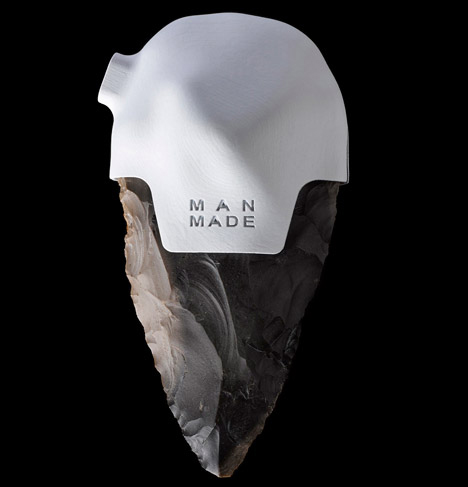
Ancient humans had no choice but to figure out how to use the raw materials around them to accomplish essential tasks. As modern people, we have the luxury of choosing from a variety of pre-made tools that even come with instructions for use. Designers Ami Drach and Dov Ganchrow taught themselves to make ancient tools and then used modern techniques to give the tools specific defined purposes.


The stone hand-axe is a prehistoric tool that was used for a very wide variety of purposes. It would have functioned as a weapon, a food preparation tool, an animal-skinning blade, and a number of other uses – but it would have had the same form when being used for all of these purposes.


Drach and Ganchrow used 3D printing to add parts onto hand-axes that would give each a specific purpose and make them easier to use. The “Man Made” project added plastic pieces to flint tools to create a spear, a clip-on belt to store a throwing weapon, a cutting/slicing tool, a tripod display case, a chisel, a digging tool, and a swinging axe-like tool.


By defining each hand tool, the duo narrowed the number of things the hand-axes could be used for but also made them easier to do those newly-defined jobs. They now have a luxury that ancient humans never had and would be shocked to see: a comfortable way to perform necessary tasks with simplistic tools.


The Man Made project combines old and new technology and points out the stark contrasts between the two. Simple pieces of sharpened flint are exceptionally primitive, while the digital mapped and 3D printing add-ons are decidedly 21st century. Who would have thought they could come together to form tools that are not only useful but strangely beautiful?

